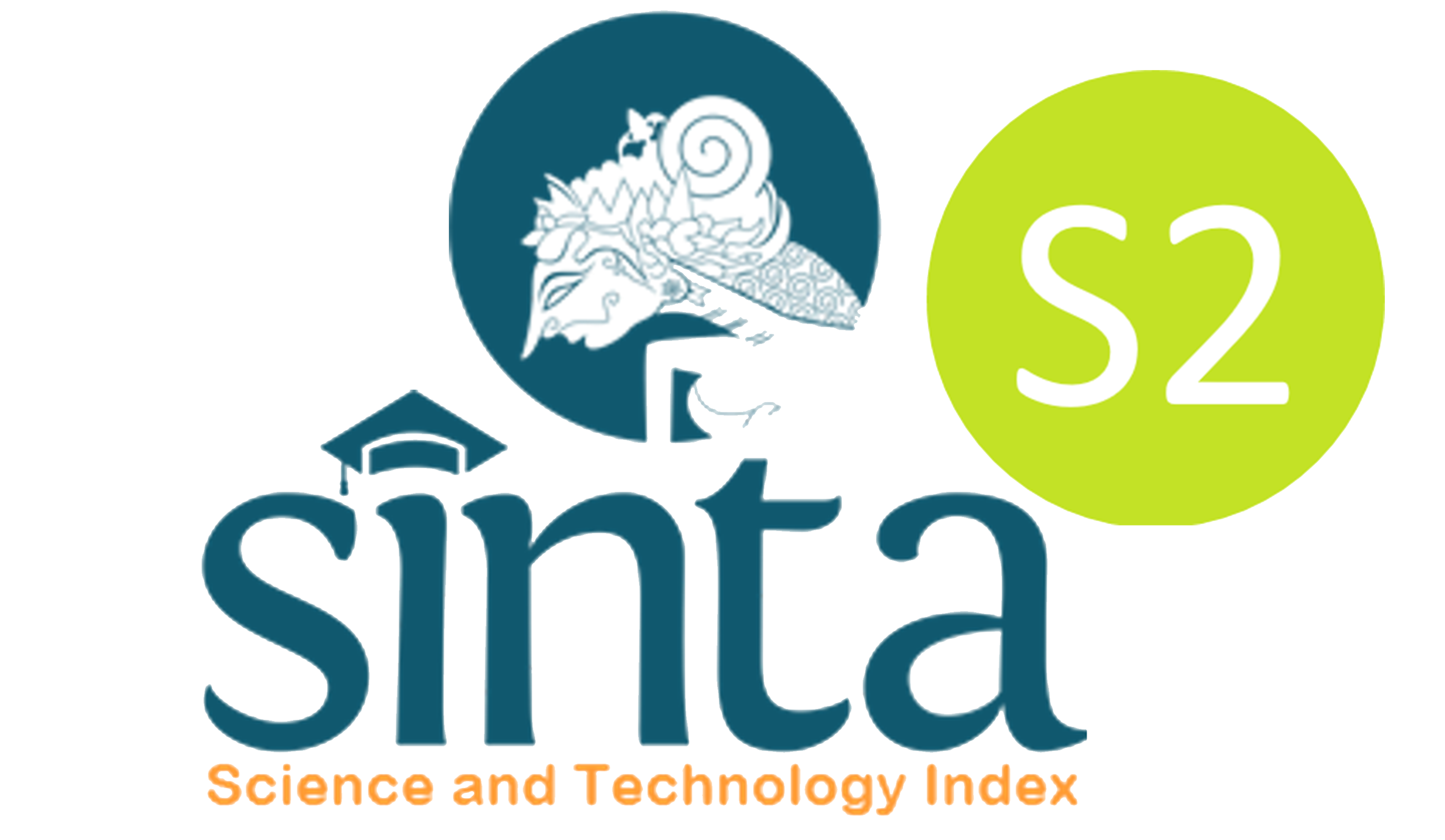WATERMARKING CITRA DIGITAL BERWARNA MENGGUNAKAN STATIONARY WAVELET TRANSFORM (SWT)
Fitriani Umar(1*); Herdianti Darwis(2);
(1) Universitas Muslim Indonesia
(2) Universitas Muslim Indonesia
(*) Corresponding Author
AbstractDigital Image watermarking is widely used and studied for ownership identification, data protection, and authentication. A good watermarking scheme should achieve the watermarking requirements such as imperceptibility, robustness and capacity. This research aims to make robust and imperceptible watermarking by using Stationary Wavelet Transform. The test is done on two levels of transformation and attacked by Salt and Pepper, Speckle, Gaussian Noise, Blur, Compression and Rotation. The results show that method used in this research gives good impercebtility with PSNR value larger than 70 dB on level 1 and larger than 40 dB on level 1. The Robustness test also shows a good result where Normalized Correction value larger 0.9466 on level 1 and larger than 0.9714 on level 2. This also shows that for imperceptibilty, level 1 of transformation gives higher results than in level 2 of transformation, while for robustness, level 2 achieves better value than level 1. KeywordsStationary Wavelet Transform (SWT); imperceptibilty; robustness; PSNR; Normalized Correction
|
Full Text:PDF |
Article MetricsAbstract view: 777 timesPDF view: 456 times |
Digital Object Identifier https://doi.org/10.33096/ilkom.v11i1.409.1-10 https://doi.org/10.33096/ilkom.v11i1.409.1-10
|
Cite |
References
C. Lin, C. Chang, and Y. Chen, “A Novel SVD-based Watermarking Scheme for,” J. Inf. Hiding Multimed. Signal Process. Ubiquitous Int., vol. 5, no. 2, pp. 124–143, 2014.
A. Pareek and P. Sinha, “Image Data Authentication using Watermarking Scheme by DWT based Data Embedding Approach,” I. Engineering pp. 9497–9505, 2015.
R. AARTHI, V. JAGANYA, and S. POONKUNTRAN, “Modified LSB Watermarking for Image Authentication,” Int. J. Comput. …, pp. 62–65, 2012.
Z. Shokrollahi and M. Yazdi, “A robust blind watermarking scheme based on stationary wavelet transform,” J. Inf. Hiding Multimed. Signal Process., vol. 8, no. 3, pp. 676–687, 2017.
N. Choubey and M. K. Pandey, “A Robust Watermarking Technique for Compressed Digital Image based on Stationary Wavelet Transform and Singular Value Decomposition,” pp. 384–389, 2015.
M. Abdullatif, A. M. Zeki, J. Chebil, and T. S. Gunawan, “Properties of digital image watermarking,” Proc. - 2013 IEEE 9th Int. Colloq. Signal Process. its Appl. CSPA 2013, pp. 235–240, 2013.
G. N. M. -, A. Y. -, and A. M. Z. -, “High Watermarking Image Quality Based on Dual Intermediate Significant Bit (DISB),” Int. J. Digit. Content Technol. its Appl., vol. 7, no. 5, pp. 733–742, 2013.
A. Poljicak, “Discrete Fourier transform–based watermarking method with an optimal implementation radius,” J. Electron. Imaging, vol. 20, no. 3, p. 033008, 2011.
A. Benoraira, K. Benmahammed, and N. Boucenna, “Blind image watermarking technique based on differential embedding in DWT and DCT domains,” EURASIP J. Adv. Signal Process., vol. 2015, no. 1, 2015.
A. Cheddad, J. Condell, K. Curran, and P. Mc Kevitt, “Digital image steganography: Survey and analysis of current methods,” Signal Processing, vol. 90, no. 3, pp. 727–752, 2010.
Refbacks
- There are currently no refbacks.
Copyright (c) 2019 Fitriani Umar, Herdianti Darwis

This work is licensed under a Creative Commons Attribution-ShareAlike 4.0 International License.










